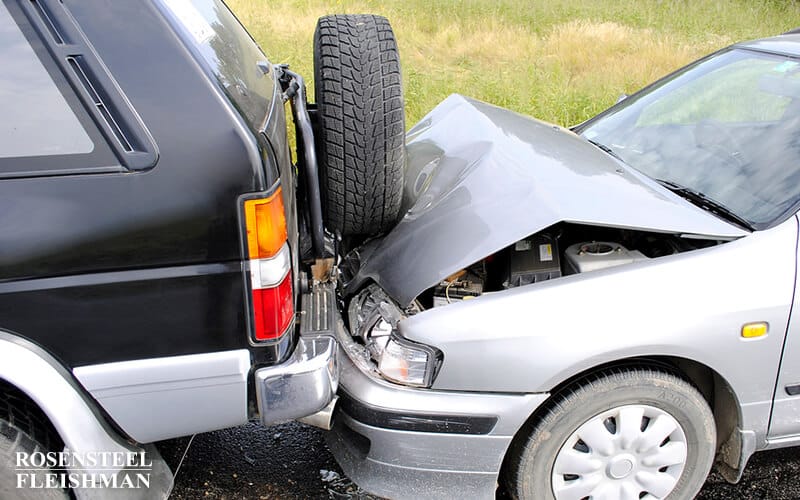After a car accident, life can feel upside down, especially when you are dealing with a painful injury like a broken arm. The physical discomfort, the sudden changes to your daily routine, and the pressure of dealing with insurance questions can quickly become overwhelming. Many people in Charlotte face this situation each year and often […]

Costs of Contributory Negligence Versus Comparative Negligence
One argument raised against changing from a contributory negligence standard to a comparative negligence standard is the increased liability costs. A defendant in a negligence action might raise the defense that the plaintiff was either contributorily or comparatively negligent. North Carolina is one of a handful of states which still employs the doctrine of contributory negligence. In most states, the doctrine of comparative negligence is used. Comparative negligence weighs the relative fault of both parties involved. Under the doctrine of comparative negligence, a plaintiff’s negligence will not keep him from receiving damages, but it might reduce the damages he receive. In North Carolina (along with Virginia, Maryland, Alabama and the District of Columbia), however, if a plaintiff is found to be even 1% contributorily negligent, he can be completely barred from receiving any damages.
The doctrine of contributory negligence comes English common law. As of 1970, 38 states in the United States still used the doctrine of contributory negligence. During the period of 1971 until 1985, 33 states switched from contributory negligence to comparative negligence. South Carolina was the most recent state to make the switch from contributory negligence to comparative negligence. That change occurred through the 1991 South Carolina Supreme Court case, Nelson v. Concrete Supply Company, in which the court justified the change by reasoning that “comparative negligence is the more equitable doctrine.”
There have been attempts in other contributory negligence states to change to the doctrine of comparative negligence. Just last fall, a bill in the District of Columbia was proposed which would have made it easier for bicyclists to collect damages when injured in motor vehicle accidents. The bill would have carved out an exemption to the liability law that would require insurance companies to use the comparative negligence model and weigh the relative fault of both parties involved in the accident. The vote on the bill was postponed twice, and the bill later died in committee.
In North Carolina, legislation appears periodically which would replace contributory negligence with comparative negligence. However, this legislation has not yet reached the Governor, and it seems unlikely that this change will occur anytime soon in North Carolina.
A study published in the Chartered Property and Casualty Underwriters Journal in 1991 notes that the tort reform of automobile liability that has occurred in most states from contributory negligence to comparative negligence is the opposite of “typical” tort reform. Typically, tort reform occurs to reduce liability costs and is favorable to a defendant. For example, this “typical” tort reform has been the case in medical malpractice tort reform which limits the amount of non-economic damages a plaintiff can recover. However, changing from a contributory negligence standard to a comparative negligence standard brings higher liability costs and is plaintiff friendly.
The study suggests that states made the change from contributory negligence to comparative negligence without considering the increased costs associated with comparative negligence. Instead, legislatures (as well as the South Carolina Supreme Court) were influenced by equity arguments. The authors of the study argue that the study’s data shows that insurance costs are likely to be higher with comparative negligence.
The study compared three different systems: the traditional contributory negligence system, the “pure” comparative negligence system, and the “modified” comparative negligence system. Under the “pure” comparative negligence system, a plaintiff’s damages are reduced proportionately to his negligence, so that a plaintiff may recover even when his negligence is greater than the negligence of the defendant. The “modified” comparative negligence systems included three different standards employed by states. First, a plaintiff can recover if his negligence is “slight” compared to the defendant’s “gross” negligence. Second, a plaintiff can recover if his negligence is less than the defendant’s. And third, a plaintiff can recover if his negligence is not more than the defendant’s.
The null hypothesis of the study was that the negligence standard would not affect insurance costs because, although more plaintiffs in comparative negligence states would recover, those plaintiffs would recover less. Instead, the data from the study showed that pure comparative negligence states had the highest bodily injury loss costs. The contributory negligence states had the lowest bodily injury loss costs. And the modified comparative negligence states were in the middle.
The conclusion section of the study cautions that “the legislatures of those … states that retain contributory negligence should adopt comparative negligence only with caution and with the expectation of higher insurance costs.” Insurers’ groups raised this argument in the District of Columbia when the D.C. Council was considering the bill which would have permitted bicyclists to recover under the comparative negligence standard. The insurers’ groups argued that if the bill passed, the insurance costs in D.C. would increase, disadvantaging drivers there since Maryland and Virginia would still follow the doctrine of contributory negligence.
In connection with the proposed bill in D.C., the vice president of the American Insurance Association suggested alternatives to changing negligence standards. These alternatives included enacting legislation which would fine drivers at fault in an accident, as well as requiring them to take additional drivers education classes. These alternatives, the vice president argued, would ensure that the injured parties are provided for without increasing insurance costs. The increase in insurance costs would be born by businesses, the government, and drivers.
It is unlikely that North Carolina will change its negligence standard of contributory negligence to comparative negligence anytime soon. It will be interesting to see if any of these other alternative solutions to providing for injured parties will be raised here.
If you have been injured in a car accident, contact attorney at Rosensteel Fleishman Car Accident & Injury Lawyers (704) 714-1450, to discuss your options.
Additional Car Accident Articles
After a car accident, it is completely normal to feel overwhelmed, especially when a head injury is involved. Even mild symptoms can leave you unsure of what to do next while more serious injuries may not show themselves right away. Many people in Charlotte find themselves facing medical questions, financial stress, and uncertainty about how […]
After a serious car accident, life can quickly feel chaotic. Between dealing with injuries, insurance adjusters, and mounting bills, it’s easy to feel overwhelmed and unsure of what to do next. When broken bones are involved, the road to recovery can be long and painful, especially when your injuries prevent you from working or taking […]
Car accidents involving multiple vehicles can leave anyone shaken, confused, and unsure of what steps to take next. The chaos of a pileup can make it hard to figure out who’s at fault, how to handle insurance claims, and where to turn for help. When several drivers are involved, each with their own version of […]
